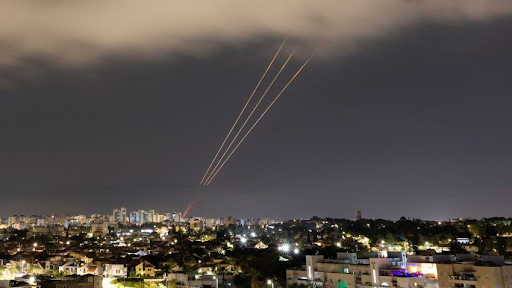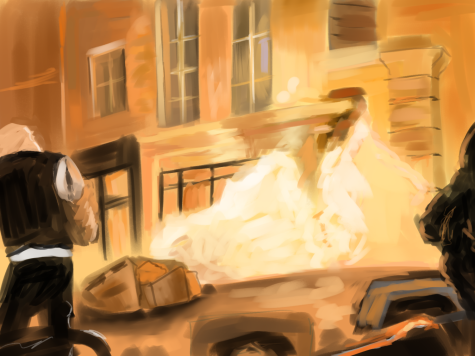Economic Ramifications of the Russia v. Ukraine War
March 8, 2022
Is there going to be another World War?
This is a question many are asking at this time of towering distress caused not merely to society, but also to the economy worldwide. This is a primary result of the well known Russia v. Ukraine conflict. In order to comprehend the current situation and the economic ramifications this disaster will have, one has to be cognizant of what factors have led to this catastrophe.
Beginning in the Middle Ages, Russia and Ukraine trace back their roots to a civilization named Kievan Rus. The Vikings were the founders of this civilization. At the time, society and communities in that region were peaceful. Subsequently, in 1793, Catherine the Great, the former renowned queen of Russia gained control over Ukraine. Nevertheless, Ukraine had always been its own unique part of Russia. It had an identity with its intrinsic languages, status and citizens. Approximately two centuries later, Ukraine successfully lost the fight for independence against the Union of Soviet Socialist Republics (USSR) in 1922. This took place under the lead of Joseph Stalin, the then communist leader of the Soviet Union. With the major fear of Ukraine receiving independence and as a result, spreading democracy to the smaller countries controlled by Russia, Stalin advocated for the turnover of peasant land to the state.. Regrettably, following this policy, a scarring event took over the lives of Ukrainians. Known to be the atrociously inhumane man-made famine, the Holodomor killed 4 million Ukrainians between 1932-33. In an effort to ___, Soviet activists went to Ukrainian homes to confiscate all food and this resulted in widespread starvation. People ate whatever they could get their hands on such as rats, animals, tree bark and some even resorted to cannibalism. Furthermore, Stalin arrested Ukrainian intellectuals, scientists, lawyers etc. which led to Ukraine entirely changing its identity by transforming their language and culture [1].
The strive to eliminate an independent Ukraine has transcended from the time of Stalin to the current president, Vladimir Putin. Putin’s primary goal is to push back democracy and its ideals from Eastern Europe and he believes that the best way to achieve this goal is to eliminate Ukraine [1].
Unfortunately, the war today does not simply affect the 2 countries directly involved, but it economically harms multiple others worldwide. Firstly, the Russian attacks have abruptly stopped agriculture in Ukraine, a major agriculture producer of corn and wheat. Gas and oil prices continues to skyrocket since the start of this disaster as Russia is one of the world’s largest crude oil and gas producers. In fact, 40% of these materials in the European Union are supplied by Russia. Regrettably, harsh sanctions have been placed on Russian-produced resources, thus surging these prices. Particularly in the US, President Biden is planning to restabilize prices by releasing oil from the Strategic Petroleum reserve, which holds about 600 million gallons of crude oil [2].
Additionally, a potential rise in inflation is predicted, as Russia is the largest producer of palladium and platinum, two widely-used metals. If there is a continuous spike in energy and metal prices, inflation will potentially increase too unprecedented levels. The invasion has further taken its toll on the stock market. The Dow, S&P and Nasdaq have fallen about 489 points, 500 points and 106 points respectively as of the last day of February [2].
What’s more, the threat of increased numbers of cyber attacks has cropped up. As a counterattack to Biden’s various sanctions on Russian banks, the US Department of Treasury and Homeland Security have sounded alarms of cyber attacks on hospitals, banks, power grids and even government offices in the US. Indeed, in Ukraine, educational departments, governmental offices, and the cabinet were experiencing “disruptions” the first day of the attacks. Lastly, this catastrophe has taken its toll on food prices as they have increased worldwide which also contributes to the rising inflation. As a matter of fact, Ukraine is the world’s largest sunflower seed oil producer, an industry that has been on the standstill. As a result, soybean, olive and other vegetable oil prices are expected to skyrocket. Contrastingly, Russia is the world’s largest producer of wheat, which is also expected to increase in costs. Russia and Ukraine together produce approximately a third of the world’s wheat, thus making the absence of their trade extremely damaging [2].
Dismally, if this disaster continues for more time, prices of every product is expected to skyrocket, thus detrimentally impacting vast worldwide economies. Sadly, this affects the lives of countless families directly and indirectly.
So, what will happen?
The pressing question of whether or when the war will end still remains in every soul hoping for peace.
[1] https://www.cbsnews.com/news/russian-history-of-subjugating-ukraine/



Yuying Wang '23 • Mar 28, 2022 at 12:10 pm
Thank you for such an informative read! I thought you did a fantastic job explaining the long history between Russia and Ukraine. You broke down the complicated topic in an easy-to-understand way, and I definitely appreciate that!
Sumedha Maddali • Apr 27, 2022 at 5:09 pm
Thank you for the appreciation Yuying! 🙂